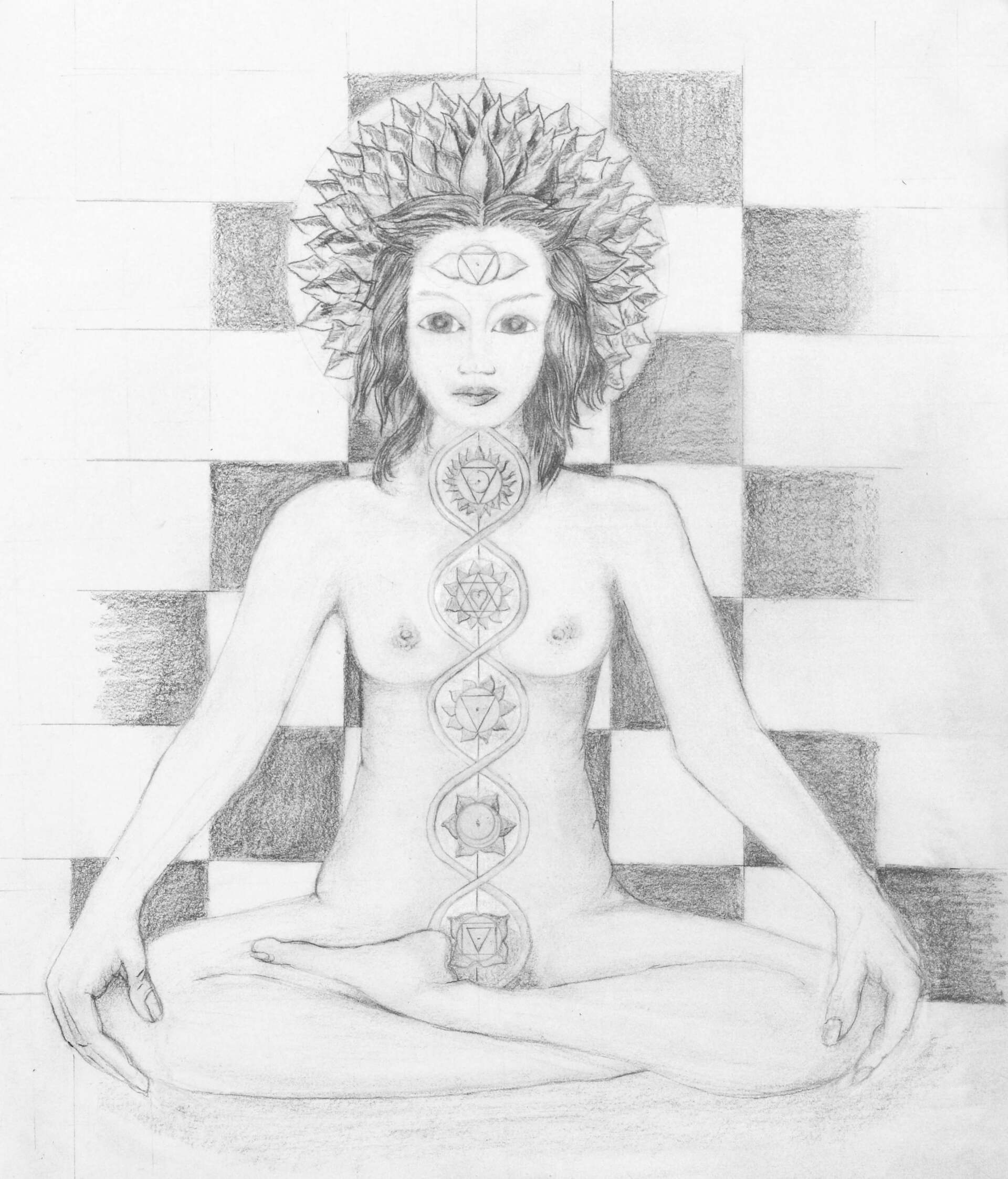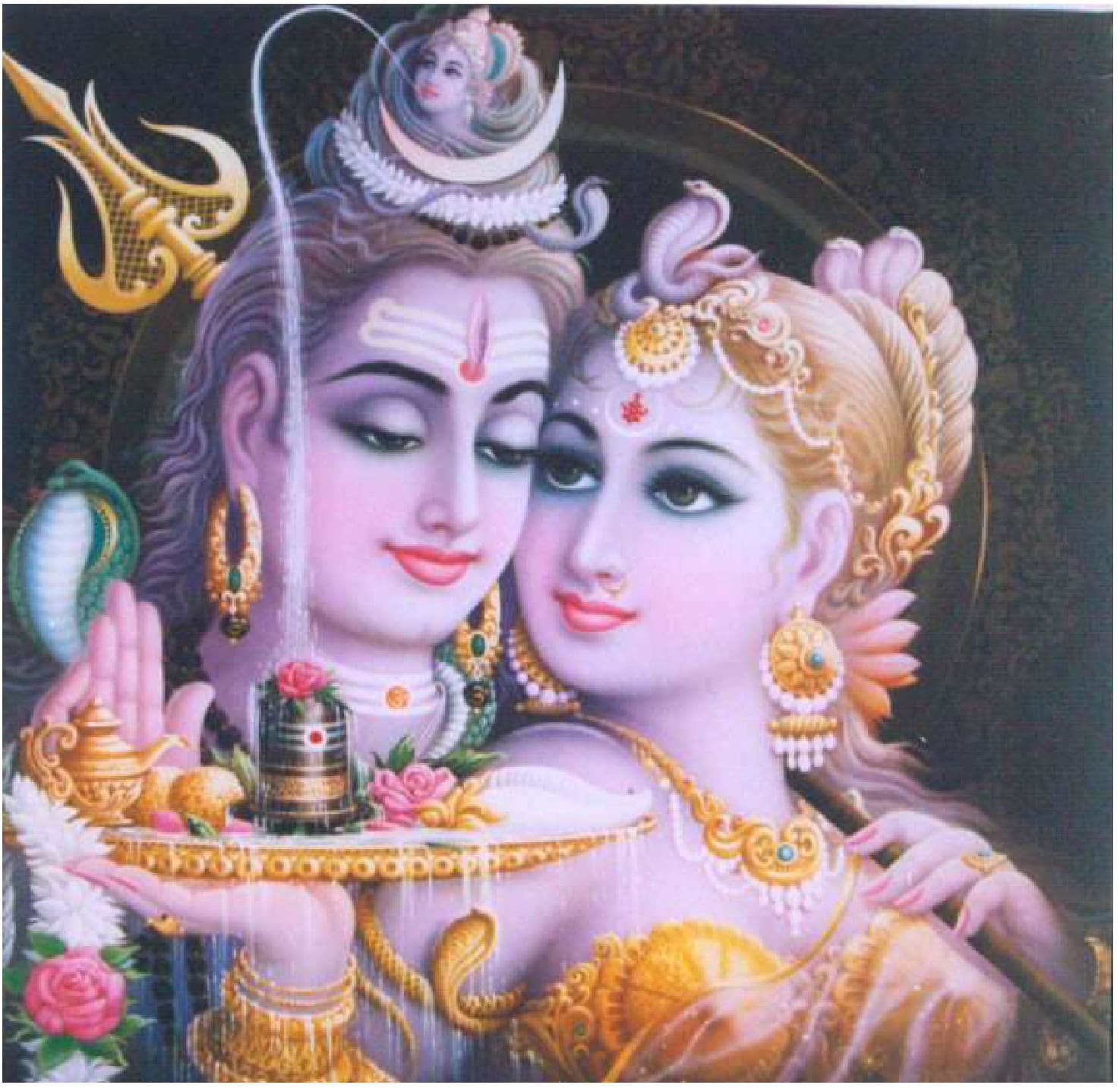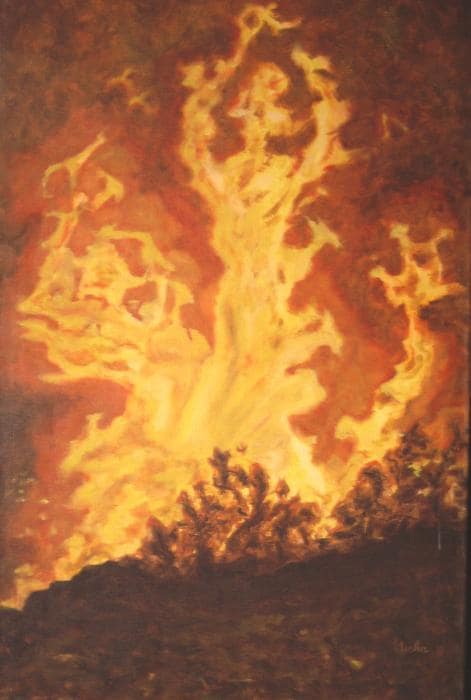Shakti, Spiritual Transformation,
and Saving Mother Earth
...
It is no coincidence that you are – as someone who is seeking spiritual growth and fulfillment in your life – also very likely an individual who feels an abiding love for Mother Earth and a deep concern for the ravages she is suffering today.
This connection between the light airiness of the inner spirit and the dark, rich material reality of the earth has been explored in many myths, legends, and sacred writings – and probably no where more thoroughly than in the ancient teachings associated with Tantra and Hatha Yoga.
Centuries ago the Tantric adepts who developed the yoga postures, or asanas, came to believe that the inner spirit that was propelling them forward on their journey towards Enlightenment was the same “stuff” that formed the most basic building blocks of the physical world around them. Of course, physicists today call this “energy”. The ancient yogis called it shakti. Unlike those scientists today who think of “energy” as a lifeless mechanical agent, the ancient yogis saw it as the life force itself – a force that was not only intelligent but divine.
They believed this life force formed the basis of not just of the beings and creatures that we think of as being alive, but of everything in the world around us. When these ancient yogis talked about the life force in this sense, they called it prana-shakti. When they referred to it as what we might think of as the inner evolutionary or transformative energy that is propelling us along our spiritual paths, they called it kundalini-shakti. Encompassing both prana-shakti and kundalini-shakti – and in a certain sense beyond them – was Shakti, the cosmic divine force who was seen as the creatrix, or Mother, of the universe.
For the ancient yogis who developed the asanas the goal of the spiritual path was Oneness with the Divine. The most important key to realizing this goal was understanding that the cosmic goddess Shakti – in her manifestations as kundalini and prana – resided in both the human body and material world.
Another essential key to achieving Oneness was recognizing the essential role of balance between the cosmic divine feminine, Shakti, and the cosmic divine masculine, who was known as Shiva and understanding how this played out within our bodies.
Many wonderful myths and sacred stories were created to get these ideas across.One of the most powerful of these is the story of the marriage of Shiva and Sati.
Shakti, the Creative Force of the Universe
A beloved version of this legend is told in the Kālikā Purāna, one of the many Hindu and Tantric Shiva and Shakti -- the divine feminine and masculine withintexts that focuses on the worship of Shakti, the Divine Mother. The story begins in the mists of time when the great god Brahma – who is responsible for overseeing the earth and all creation – calls Vishnu and the other gods and goddesses to a great council in hopes of averting a cataclysm he sees looming on the horizon. Shiva – that pesky god who smears himself with ash, dances on burial grounds, and crunches bones – is causing trouble again. Unlike Brahma and Vishnu, Shiva is an ascetic: he would much rather be meditating on a mountain top and doing the most austere types of yogic practices than taking care of humanity and the rest of creation. These austere practices of Shiva’s build up intense psychic energy, and lately he has been so focused that the energy has become volcanic and threatens to erupt in a cosmic force that will destroy the earth and all the living creatures.
Just when the great council is about to despair of finding a solution, someone suggests marrying Shiva off to an exceedingly alluring woman. This, it is suggested, would not only distract Shiva from his energy-intensifying practices but also trick him into burning off a good deal of that energy in sexual dalliance. The gods and goddesses cheer the idea, but Brahma has no idea how to put the plan into action. He knows that no goddess – no matter how tempting – has yet been able to entice Shiva. Completely confounded, Brahma decides to fly off to see Shakti, the Great Goddess herself, and ask for help. Shakti listens to Brahma’s passionate pleas, and agrees to come to his aid. She says that she will come to earth and be born as a woman Shiva will find irresistible. Her name, she says, will be Sati.
Sati is duly born to earth parents and, once she reaches adulthood, plans her campaign to attract Shiva. Knowing that it is not outer but inner beauty that will win Shiva’s heart, she sets out to become an accomplished student of yoga and take on the most challenging spiritual practices. It is not long before Shiva notices this extraordinary yogini. He comes to earth to meet with her and soon falls hopelessly in love.
The goddess Sati is one manifestion of the divine feminine ShaktiOn their wedding day the gods and goddesses, decked in gold and jewels, arrive in chariots. They are followed by long retinues of brightly clad humans who dance along joyously beating on drums, blowing on conch shells, and striking together cymbals that glitter in the sun. Marching along behind them is a splendid procession of birds, animals, and insects. On the earth below, fragrant winds blow and flowers rain.
Only one dark moment spoils the spectacle. Sati’s earth father, Daksa, has long forgotten that she is really the great goddess Shakti. Appalled that his beloved daughter is marrying the bone-crunching, ash-smeared Shiva, he almost refuses to give her away. Sati is humiliated by her father’s reluctance and warns him that if he ever disgraces her again she will destroy herself in front of his eyes.
After this confrontation, the ceremony proceeds and a joyous celebration ensues. When it is over, Shiva places Sati in front of him on the great bull he often rides and the two fly off to his home in the Himalayas. There they stay for many years, delighting each other with their lovemaking. Although Shiva does not abandon his yogic practices during this interlude, they become less austere and much more balanced. Soon the earth is no longer in danger of being destroyed.
But just about the time Brahma thinks he can stop worrying about the fate of the earth, a tragedy begins to unfold. One day when Shiva is off meditating, Sati hears tell of a great celebration being held in the universe. Curious, she soon discovers that every one in heaven and on earth – from the great gods and goddesses down to the lowliest insect – has been invited to the festivities.
Determined to find out why only she and Shiva have not been invited, she flies off to the celebration. There she discovers that it is being held by none other than her earth father. Daksa has once again forgotten Sati’s true nature and lost sight of the critical importance of Shakti’s union with Shiva. Enraged, Sati stands before Daksa, reminds him of her promise, and before he can stop her, bursts into flame and dies.
Shiva Grieves the Loss of Shakti
Immediately Sati’s body is transported back to her Himalayan home. Shiva, returning from his Sati as manifestation of the divine feminine Shaktimeditation, finds her there. Overwhelmed with grief, he gathers her body into his arms and begins flying in frenzied circles around the earth. His racking sobs quake and crumble the mountains; his tears fall in scalding torrents that boil across the valleys and the plains.
Brahma is horrified, his worst fears for creation are about to be realized. He calls to Vishnu for help and the two begin flying around the earth on either side of Shiva. Realizing that Shiva will never be able to begin to heal his grief while still holding Sati in his arms, Brahma and Vishnu slowly begin taking bits of Sati’s body and dropping them to earth. Eventually, Shiva finds his arms empty.
Awakening to the destruction he has caused, he takes control of his frenzied grieving. Brahma is then able to give him the good news that Shakti has promised to take form again at some time in the future: she will be incarnated as a goddess known as Parvati, she will marry Shiva again, and they will live in eternal happiness.
Somewhat soothed, Shiva looks down and realizes that his beloved goddess has been embodied in the earth. Flying to the spot where Sati’s yoni – her genitals, the most sacred part of her body – have been embedded, Shiva forms himself into the phallic shape known as a lingam and settles down to await her return. The earth returns to peace and all created beings to a state of prosperity….
This image — of pieces of the goddess literally falling to the earth and being absorbed by it – tells us in a very powerful and graphic way that the divine feminine is embedded in the Earth. It tells us that the Earth is sacred; the Earth is holy. And because the Earth is a symbol here for all material creation, the story is also telling us that the divine feminine is everywhere and in everything.
Many age-old Hindu texts like the Kālikā Purāna that focus primarily on the divine feminine describe Shakti as the cosmic creative energy of the universe. Athough these texts tell us that her divine masculine counterpart, Shiva, is equally important, they make it clear that Shakti is, as mentioned earlier, not only the creatrix of the universe, she is the cosmic essence the universe is made of. This means, the texts tell us, that the tree you see out your window is Shakti, that the pebble you discover on the beach is Shakti, and that you, too, are Shakti.
To make this relationship between ourselves and the world even clearer, many of these texts contain wonderful creation stories in which Shakti bursts forth and manifests as the universe and everything in it. Once this is accomplished, these stories tell us that Shakti’s job is to propel the universe along its evolutionary path. Her ultimate goal in this awesome task is to advance the evolution of everything in the material world until it is ready to be reabsorbed into the Absolute – the Divine that is beyond human comprehension. When this moment finally arrives, Shakti is said to reunite with her beloved Shiva, and the two – along with everything in the known universe – dissolve into the Oneness of the Absolute.
Shakti, Evolution, and Creative Solutions
Just as Shakti is responsible for the on-going evolution of the universe, these texts make it very clear that, in her manifestation as kundalini-shakti, she is responsible for the personal evolution of each and every one of us. These texts often symbolically describe kundalini as a coiled serpent that rests at the base of our spines. There she stays until, through spiritual practices such as yoga, she is awakened. Once awakened, she travels upwards through the energy centers known as the chakras until she reaches the crown of the head where Shiva is said to wait for her.
Just as Shakti’s reunion with Shiva brings about Oneness in the cosmos, kundalini-shakti’s awakening brings about the realization that we are not only one with the Divine, but one with the world around us. We are one – in a very real sense – with Mother Earth. Knowing this, we become aware at the most profound level that when we harm her, we are quite literally harming ourselves and that when we nurture her we are just as literally nurturing our Selves.
This explains in a very concrete way why so many of us who think of ourselves as being on a spiritual journey have such a profound sense of connection to Mother Earth and such a deeply moving concern for her well-being. As kundalini in her role as the trigger for our spiritual evolution becomes increasingly active in us, we become increasingly aware – either consciously or subconsciously – that we are one with the world around us. We then, quite naturally, become more concerned for the environment and, often, more active on ecological issues.
It is my belief that, because the Earth and our inner spiritual growth are so intrinsically connected, working in whatever way we can to save Mother Earth has the converse of effect of furthering our personal spiritual growth. I see this cycle of growing spiritually and becoming more concerned about Mother Earth and, then, working to save the environment and, consequently, growing spiritually as one of the most hopeful signs imaginable. With the grace of the goddess, our increasingly evolved, spiritual selves will find new and more creative ways to solve the problems besetting Mother Earth and, eventually, save her.
For more information on Shakti and how kundalini works in our lives:
Avalon, Arthur (Sir John Woodroffe). The Serpent Power. New York: Dover Publications, 1974.
Degler, Teri. The Divine Feminine Fire: Creativity and Your Yearning to Express Your Self. Pennsylvania: Dreamriver Press, 2009.
Feuerstein, Georg. Tantra: The Path of Ecstasy. Boston: Shambhala, 1998.
Kieffer, Gene, ed. Kundalini: Empowering Human Evolution: Selected Writings of Gopi Krishna. New York: Paragon House, 1995.
Krishna, Gopi. Living with Kundalini. Rev. by Leslie Shepard. Boulder, Colorado: Shambhala, 1991.
Krishna, Gopi. Secrets of Kundalini in Panchastavi. New Delhi, India: Kundalini Research and Publication Trust, 1978.
Krishna, Gopi. Higher Consciousness: The Evolutionary Thrust of Kundalini. New York: The Julian Press, 1974.
Shastri, B.N., Trans., The Kālikāpurāna (Part I & Part) II. Delhi-7, India: Nag Publishers, 1991.
To see more art by Usha Shatharam





